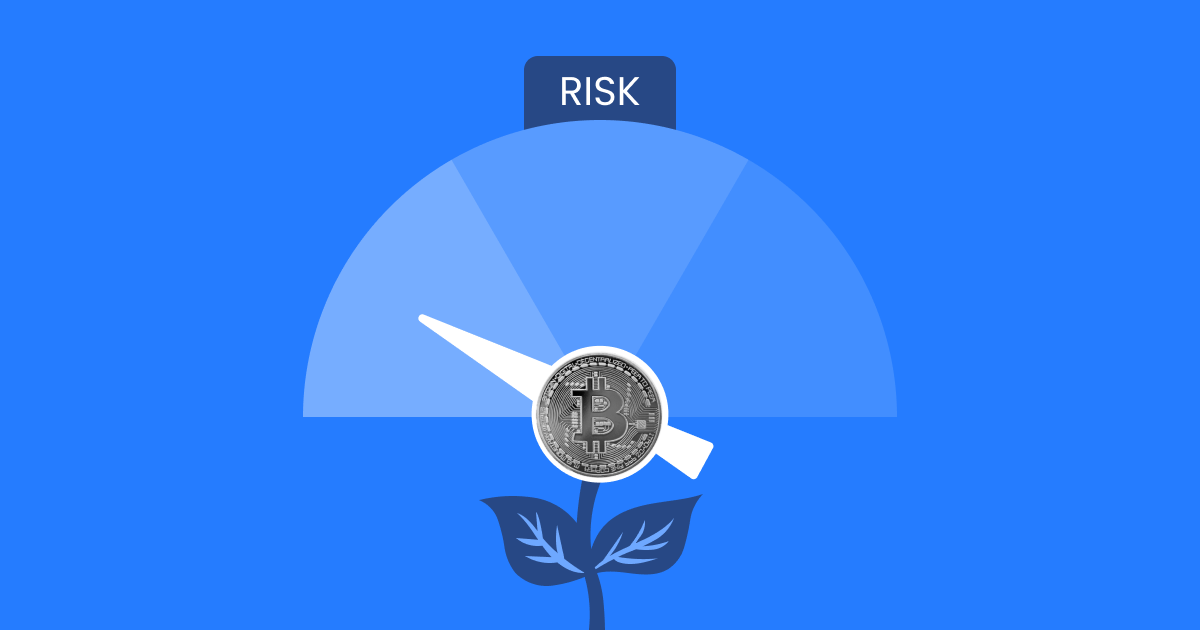Q2 2024 Market Report This report will cover all the shifts that...

If you have some extra cash that you don’t need to spend right away, you would probably deposit it in a bank, where you might earn interest rates if the bank offers them.
This, however, may require you to lock up the funds you have deposited, implying that you may not access your money whenever you want. Instead, you’ll get access when the lock-up period finishes, typically within 90 to 180 days.
Crypto staking functions in a similar way. You delegate specific stake-able coins and tokens to a staking platform and reap APY (annual percentage yield). The APY is directly proportionate to the amount of crypto you stake, as well as the staking period. The more and longer you stake, the greater APY you will yield.
While crypto staking is one way to earn interest, there is another, relatively new method called crypto yield farming that offers the potential for higher returns, but also comes with higher risks. It promises three-figure annual percentage yields (APY).
Table of contents
Yield farming refers to decentralized finance (DeFi) strategy which enables cryptocurrency owners to make interest or other rewards. This is achieved by supplying liquidity to a decentralized protocol. Having emerged in 2020, it has grown in popularity only recently, as investors seek out strategies for boosting their returns in the cryptocurrency industry.
In conventional finance, investors lend money to banks or other financial institutions in order to reap interest on their deposits. By lending their coins and tokens to DeFi protocols, investors can obtain comparable returns in the cryptocurrency world thanks to crypto yield farming. The deposited funds are put to use by these protocols to supply liquidity for decentralized exchanges, lending marketplaces, or other financial goods.
Some of the best yield farming platforms are listed below.
Depositing cryptocurrency into a liquidity pool on a DeFi network is a common method of yield farming. Liquidity pools are smart contracts that enable users to exchange cryptocurrencies by autonomously carrying out trades between two cryptocurrencies. In proportion to their contribution to the liquidity pool, the liquidity providers (LPs) receive a part of the trading fees produced by it. Besides trading fees, yield farmers, i.e., people who deposit their crypto, can receive rewards in the form of extra cryptocurrency or protocol-issued tokens.

DeFi protocols give a broad range of rewards, such as newly created tokens, governance tokens, and other incentives. While some protocols give greater returns for providing liquidity to less popular pools, others do so for liquidity pools with high trading volumes.
Though the idea of earning high rewards by doing almost nothing sounds more than attractive, it’s critical to warn that crypto yield farming is a risky strategy. This is due to the fact that the value of the rewards received may change depending on how well the underlying cryptocurrency or token performs. Additionally, LPs may experience an impermanent loss that happens when the prices of the two tokens in a liquidity pool greatly diverge from their initial ratio at the time of deposit.
In addition to the impermanent loss we’ve just mentioned, which is basically a result of the crypto market volatility, yield farming may face smart contract risks.
DeFi protocols are built on smart contracts. When specific conditions are fulfilled, these contracts are programmed to carry out a series of actions. However, if the smart contract happens to have any flaws or vulnerabilities, hackers may use them to their advantage and steal money.
Before using the DeFi protocol for yield farming, you should carefully investigate not only the security of a smart contract but also the team’s reputation.
Crypto yield farming may be a highly competitive market, since myriads of investors are competing for the same rewards. As a result, possible profits may be reduced by high gas prices and other transaction expenses.
Finally, it’s worth noting that yield farming is a constantly evolving and challenging field, with new procedures and products emerging frequently. Thus, it might be challenging for investors to stay current with the new developments and make sure their investment choices are well-informed.
Although crypto yield farming comes with high risks, it still appeals to investors, partly because it offers higher rewards than traditional investments, as we’ve already mentioned. On some platforms such as PancakeSwap, you can reap three-digits rewards.
As such, it stands for a great passive income. It is a low-maintenance investment choice because the rewards are automatically earned once the liquidity is provided.

Finally, yield farming allows investors to diversify their portfolios. As a yield farmer, you can take advantage of rewards coming from a variety of sources. At the same time, you need to be aware of and reduce the risk of loss due to market volatility or impermanent loss by giving liquidity to various pools.
Given that yield farming is a lucrative but risky way of generating (passive) income, there are some yield farming strategies to implement to maximize returns and minimize risks.
Research DeFi protocols. As is always the case with cryptocurrencies, it’s critical to conduct careful research prior to investing in any DeFi protocols. Investigate the security audit, team image, liquidity, and rewards that a protocol provides. Also, be wary of the volatility risk connected with the token as it can have a big impact on returns.
Diversify investments. Investment diversification is an essential strategy for reducing risk in yield farming. Spread your investments across different DeFi protocols rather than placing all of your eggs in only one basket. This way you’ll reduce their risk of impermanent loss due to market volatility.
Reinvest Rewards. Instead of withdrawing the rewards earned from crypto yield farming, consider reinvesting them in the same or another DeFi protocol. This approach can help to not only increase your investments but also generate even higher returns.
Monitor market conditions. Since yield farming is susceptible to market conditions and volatility, it’s crucial to monitor them closely. Monitor the liquidity of the DeFi protocol you’re investing in, as well as the rewards offered. Stay informed of any protocol-related news or updates because they may affect the token’s price.
Consider stablecoins. Though it may sound strange at first glance, stablecoins should not be excluded. Investing in stablecoins like USDC or DAI through yield farming can provide a more secure investment option. Given that they are pegged to a stable fiat currency or a commodity, stablecoin prices are less volatile than other cryptocurrencies. Thus, by investing in stablecoins you can reduce their risk of loss from market volatility and make relatively stable returns.
One of the largest risks in yield farming is the volatility of digital assets being used to farm with. Even if you make 25% APY on a token, if the token depreciates 50%, you’re significantly down on your investment after a year of farming.
Decentralized finance (DeFi) has brought about significant changes in the traditional finance industry. DeFi refers to the implementation of blockchain technology to build universally open, transparent, and available decentralized financial systems.

Regarding crypto yield farming DeFi comes with advantages and disadvantages.
In addition to high returns, other benefits of DeFi in yield farming include:
Anyone who has an internet connection and adequate wallet is welcome to use the DeFi platforms. Unlike traditional finance, which may restrict its services to certain individuals, DeFi is accessible to everyone. As a result of such accessibility, people can get into not only yield farming but also other services that generate returns.
As the name suggests, decentralization is a key feature of DeFi. By eliminating the need for intermediaries such as banks in financial transactions, DeFi reduces costs and increases transparency. By doing so and allowing investors to communicate directly with the protocols, crypto yield farming on DeFi platforms improves the security and transparency of the protocols.
Speaking of which, as DeFi protocols are open-source, and all transactions are documented on the blockchain. This makes it simpler for yield farmers and investors in general to monitor their investments. Transparency in yield farming is ensured by investors’ ability to watch the flow of money and keep track of rewards received.
In terms of challenges, besides those generally related to yield farming — smart contract risks, impermanent loss, and market volatility, others involve liquidity and regulatory risks.
When necessary, yield farmers need to be able to take money from the DeFi platform. However, the platform might not have enough liquidity to satisfy all withdrawal demands. If this occurs, the yield farmer may suffer from financial damage.
Because cryptocurrencies and decentralized finance are not yet fully regulated, it could be said that DeFi operates in a regulatory gray area. Due to this, regulators might retaliate against DeFi platforms, leading to their shutdown or other legal measures. Both of these could significantly affect the value of DeFi investments.
Traditional investments and cryptocurrency yield farming are two different ways to invest and generate returns. We now know what yield farming is — lending crypto DeFi protocols to generate high (passive) rewards.
On the other hand, traditional investments typically involve investing in assets such as stocks, bonds, and mutual funds through conventional and centralized financial institutions like banks and brokerages.
Since we’ve already covered pros and cons of yield farming, let’s delve into those of traditional investing.
Pros:
Cons:
To make the most of yield farming and avoid unnecessary losses, it’s advisable to follow investing practices that have already proved to be successful. Doing due diligence, portfolio diversification, staying updated and aware of risks, are just some of yield farming strategies. For higher rewards and greater success, consider adding other techniques to your investment practice.

Always start small. This is critical when getting into yield farming. A golden rule of crypto investing is to only spend what you can afford to lose. As you’re gaining experience with yield farming and its risks, gradually increase your investment.
Use stop-loss orders to restrict your losses by automatically selling your tokens when their price falls below a specific level. This can be a helpful instrument for risk management and investment protection.
Monitor gas fees as they can be pretty high in DeFi, especially when there is high demand. When making purchases, keep a watch on the fees. If you notice that fees are too high, consider postponing investing until times when there is less demand to save money.
Last but not least, monitor your investments, and keep track of your returns on a regular basis. To be informed of major alterations in token prices or platform activity, think about setting up alerts.
So, yield farming can be an extremely lucrative way of generating income. We hope that, with this yield farming guide, you’ll manage to minimize risks and maximize rewards. Should you encounter any problems, don’t hesitate to reach out to us at Veli.io.
Latest Articles
Veli Partners With Krypto-Verzeichnis to Empower Digital Asset Financial Advisors We’re thrilled...
Veli Acquires European Crypto License to Enhance Regulatory Status As of July...